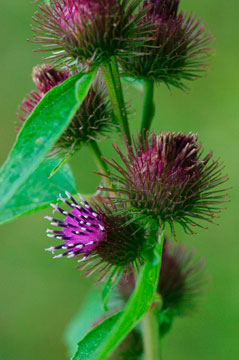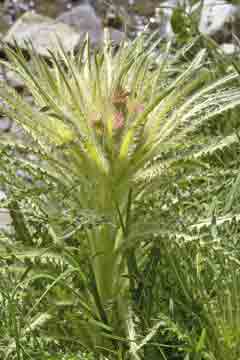
Elk thistle, Cirsium foliosum (Hook.) DC. (left). The elk thistle blooms in early summer along mountain streams and in wet meadows. The young plants are eaten by elk and bears; the peeled stems are edible for humans. The plants are easily identified by their size (it is our largest native thistle), by their many prickly pinnate leaves (foliosum means “leafy”), and by thebracts (specialized leaves that cup the flower parts) that extend well above a pinkish flowerhead that turns brown as the plant matures. Both this plant and Hooker’s thistle were gathered by Thomas Drummond (1780-1835), a Scot who collected plants in western America.
Hooker’s (or white) thistle, Cirsium hookerianum Nutt. (right). Hooker’sthistle, was given the name hookerianum by Thomas Nuttall in 1841 to honor William Jackson Hooker (1785-1865), professor of botany at Glasgow and later Director of England’s Royal Botanic Garden. The plant , a true native, grows at mid- to high elevations. Its white flowerhead makes identication easy. Cirsium is a Greek word for a knot of veins, a condition that thistles were used to treat in the distant past. Hooker's thistle has a rather localized distribution, for it grows only in Idaho, Washington, Wyoming, Montana, British Columbia and Alberta.
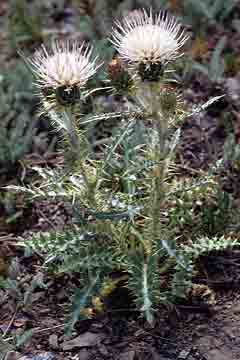
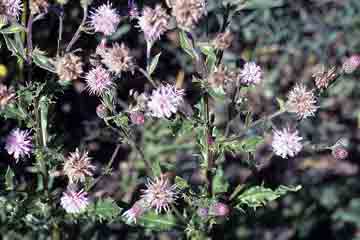
Canadian thistle, Cirsium arvense (L.) Scop. (right). The misnamed Canadian thistle, like the spotted knapweed, is a noxious, spreading, exotic plant, originally a native of Eurasia, that now grows in most states and Canadian provinces. It is a serious, although not unattractive, weed. It is not easily missed, for it often grows tall, with deep purple flowers. The plants are deeply rooted, perennial s that are difficult to eradicate, commonly found growing on disturbed ground and especially along roads and railroad tracks. We have seen it growing high in the montane zone, well away from a populated area.

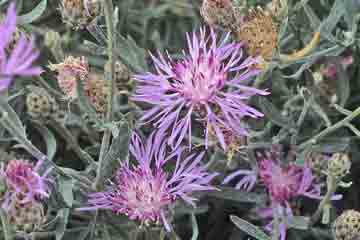
Yellow Star-thistle, Centaurea solstitialis L. (right). The yellow star thistle is another thoroughly noxious Eurasian Centaurea that has spread through most of the United States and Canada. Hardy, deep-rooted, woody. and rapidly spreading, it is found in large numbers on open mountain slopes at lower elevations, especially in western Idaho where intensive efforts, both physical (goats eat the plant) and biological, are being used to control the plant. Its appearance is unique so that one may identify it at first glance.
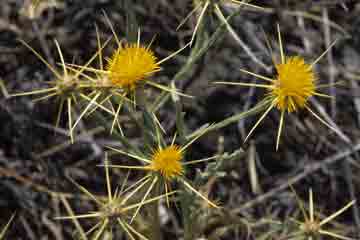
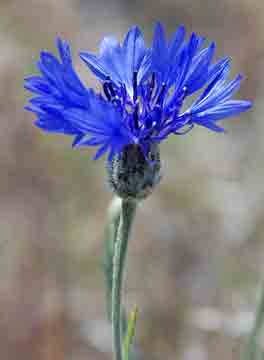
Common burdock, Arctium minor Bernh. (right) is a Eurasian import, designated as a noxious weed in several states. It grows in every state and in all but the northernmost Canadian provinces. The plants favor disturbed ground and are found in Idaho at least as high as the montane zone. Despite its weedy status, burdocks are interesting plants: their dried fruit is beloved by boys, their purple flowers are striking, all parts of the young plants are edible, and the hooked spines provided a design for the inventor of Velcro.
